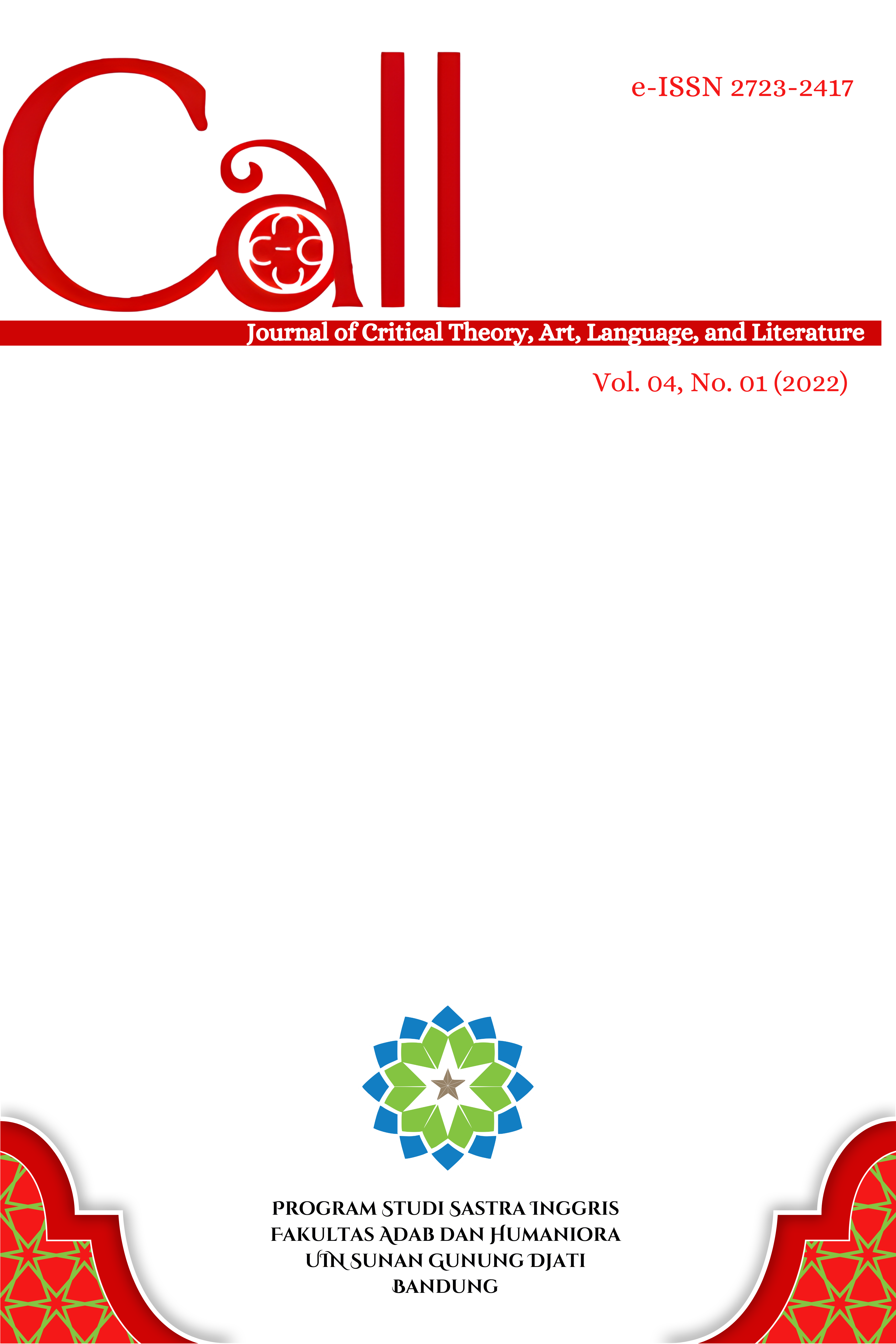SIMILES IN GEORGE BAMBER’S RETURN TO DUST
Main Article Content
Abstract
The objective of this study was to investigate similes in George Bamber's Return to Dust. This study used descriptive qualitative in order to explore the kinds of simile in the dialogue utterance of characters in such drama. The results found that the most frequent kind was descriptive simile 40%, close simile 35%, illustrative simile 15%, open simile 5% and illuminative simile 5%. Descriptive simile occurs on a character named James and Daphne as a scientist while describing the things in their work of experiments. A closed simile occurs in James's utterance when comparing the definition of one object to the tenor. Illustrative similes were also found in James's utterance while describing the process of experiment in science. Open and illuminative similes were found while explaining the quality of the condition and comparing the character to scientific experiments. Similes were used in the drama Return to Dust in describing something in order to create a lasting impression in the readers’ minds.
Â
Keywords: simile, drama, return to dustArticle Details
Authors who publish in CALL agree to the following terms:
- Authors retain copyright and grant the journal right of first publication with the work simultaneously licensed under Attribution-ShareAlike 4.0 International (CC BY-SA 4.0) License that allows others to share the work with an acknowledgment of the work's authorship and initial publication in this journal.
- Authors are able to enter into separate, additional contractual arrangements for the non-exclusive distribution of the journal's published version of the work (e.g., post it to an institutional repository or publish it in a book), with an acknowledgment of its initial publication in this journal.
- Authors are permitted and encouraged to post their work online (e.g., in institutional repositories or on their website) prior to and during the submission process, as it can lead to productive exchanges, as well as earlier and greater citation of published work (See The Effect of Open Access).
References
A. Lambert, Vickie & E. Lambert Clinton. 2012: Qualitative Descriptive Research: An Acceptable Design. Thailand: Pacific Rim International Journal of Nursing Research.
Abrams, M. H. 2015. A Glossary of Literary Terms. Cornell University. Boston, Massachusetts: Heinle & Heinle, Thomson Learning, Inc.
Fadaee, Elaheh. (2011). Symbols, metaphors, and similes in literature: A case study of “Animal Farmâ€. Journal of English and Literature.
Gumperz, John J. 2011. Discourse Strategies. Cambridge: Cambridge University Press.
Hartono, Jogiyanto. 2014.†Metode Penelitian Bisnisâ€. Edisi Ke-6. Yogyakarta.Universitas Gadjah Mada.
Hornby, A.S.2005. Oxford Advanced Learner’s Dictionary. Oxford: Oxford University Press.
Larson, M. L. (1984). Figurative propositions/ metaphors and similes. In Meaning-based translation: A guide to cross-language equivalence. Lanham: University Press of America.
Octha Sri Devi, Ni Putu Antary, dkk. (2016). Similes In Novel Looking For Alaska By John Green. Udayana University: Jurnal Humanis, Fakultas Ilmu Budaya Ubud.
Nur Padillah, Evi, dkk. (2016). Simile, Hyperbole, Personification and Metaphor Used in Gayle Forman's If I Stay. Depok: Jurnal Ilmiah Sastra.
Perrine, Laurence. 2012. Sound and Sense: An Introduction to Poetry. United States of America: Harcourt Brace Javanovich, INC.
Pinkers, S. (2011). Words and rules: The ingredients of language. New York, USA: Harper Collins.
Shamsaeefard, Mansour, dkk. (2013). Strategies for Translation of Similes in Four Different Persian Translations of Hamlet. Iran: Linguistics and Literature Studies.
Teilanyo. 2017. Figurative Language in Translation: A Study of J.P. Clark’s The Ozidi Saga. International Journal of Linguistics, Literature, and Culture, 52(2), 309–326. Retrieved 22 February 2021 from https://www.erudit.org/en/journals/meta/2007-v52-n2-meta1727/016 073ar/
Verderber, R. &Sellnow, D. (2011). The challenge of effective speaking. [Online] Retrieved on 22nd November 2014 from: http://www.slideshare.net/importerss/what-is-a-presentation.

